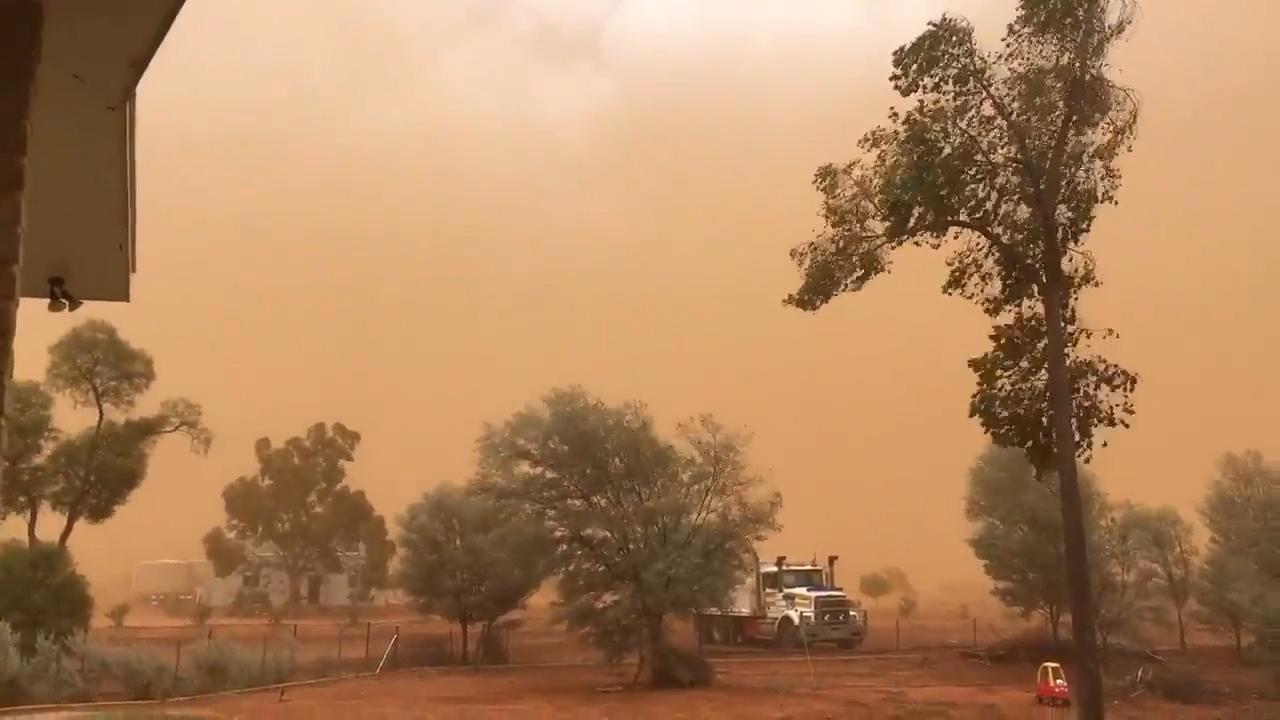Massive dust storm sweeps towards Niger's capital city
Raw video: Huge dust storm caught on camera rolling through Niamey, the capital city of Niger.
Get all the latest news on coronavirus and more delivered daily to your inbox. Sign up here.
A massive wall of dust and sand that engulfed the capital of the West African nation of Niger Monday turned the sky red and terrified residents.
Footage filmed by Doulaye Bonkano showed the towering wall of sand overtaking the city of Niamey.
One Twitter user described the sight as "utterly terrifying."
DUST STORM NEAR DUSTY, WASHINGTON CAUSES CRASH, SHUTS HIGHWAY FOR SEVERAL HOURS
The dust storm hit Niamey around 2 p.m. Monday, local media reported, causing air traffic to temporarily stop, before torrential rains arrived.

A massive sandstorm swept into Niamey, the capital city of Niger, on Monday. (Doulaye Bonkano via Storyful)
Images posted to social media show the approaching wall of dust descending on the city.
Residents said the storm turned the sky dark, right in the middle of the day.
Other images showed the dust turning the sky orange.
Niger is known for frequent sandstorms that sweep Saharan sand through the country and out toward the Atlantic Ocean. They typically hit from January to April, in what is known as the "Harmattan" season.
According to the World Meteorological Organization, the storms usually occur when strong winds lift large amounts of sand and dust from bare, dry soils into the atmosphere. They are usually caused by thunderstorms.
HURRICANE FORECASTS WILL SEE SOME CHANGES FOR 2020: HERE'S WHAT WILL BE DIFFERENT
Besides creating visibility issues and travel delays, the WMO said airborne dust also presents "serious risks" for health. Besides impacts from particles on human organs, some infectious diseases also may be transmitted by dust, such as meningococcal meningitis.
"Outbreaks occur worldwide, yet the highest incidence is found in the 'meningitis belt,' a part of sub-Saharan Africa with an estimated population of 300 million," the WMO states.
CLICK HERE FOR MORE WEATHER COVERAGE FROM FOX NEWS
According to the National Weather Service (NWS), dust storms and haboobs can occur anywhere in the U.S. but are most common in the Southwest. Haboobs occur as a result of thunderstorm outflow winds.
Dust storms present the biggest threat to motorists, as the advancing wall of dust and debris may be miles long and several thousand feet high. Since dust storms strike with little warning, they can make driving conditions especially hazardous.
CLICK HERE FOR THE FOX NEWS APP
"Blinding, choking dust can quickly reduce visibility, causing accidents that may involve chain collisions, creating massive pileups," according to the NWS. "Dust storms usually last only a few minutes, but the actions a motorist takes during the storm may be the most important of his or her life."


